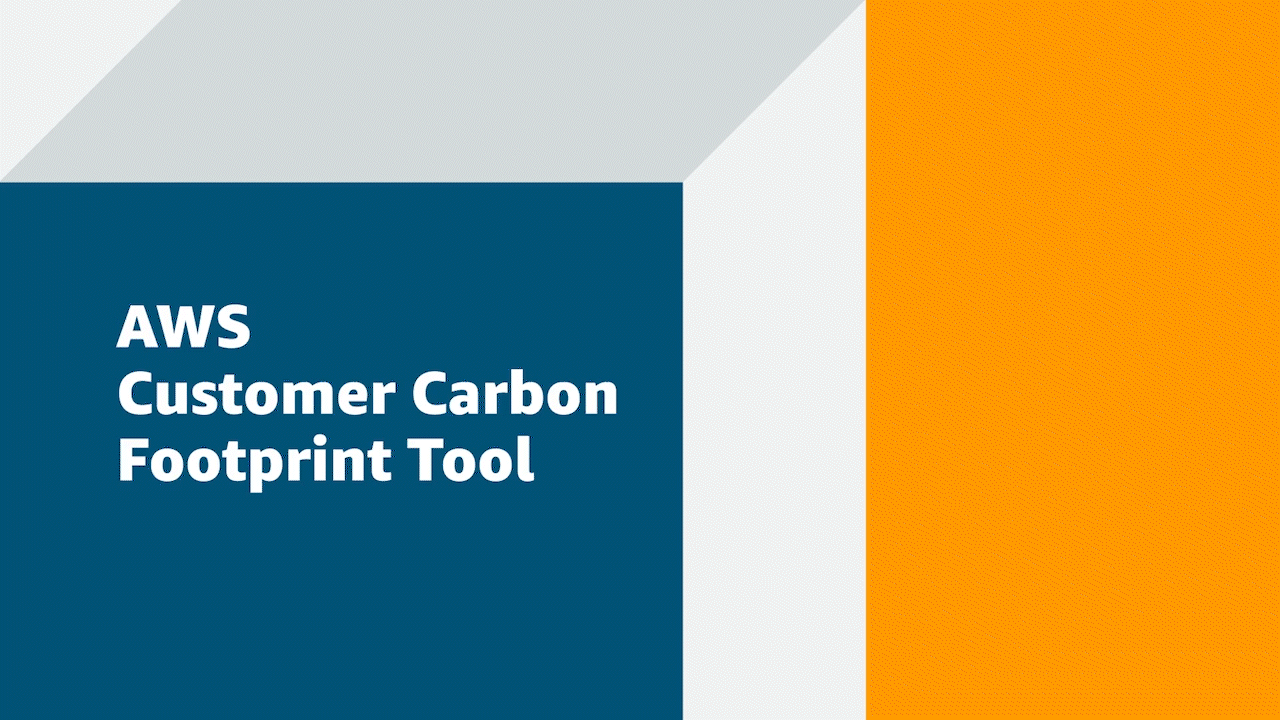As the world’s most comprehensive and broadly adopted cloud service, Amazon Web Services (AWS) is committed to building a sustainable business for our customers and the planet. A new way AWS is fulfilling this commitment is by launching the customer carbon footprint tool, which shows customers how AWS helps to reduce their carbon footprint, compared to on-premises solutions. AWS developed the customer carbon footprint tool to support customers on their sustainability journey.
This new tool uses easy-to-understand visualizations to show customers their historical carbon emissions, evaluate emission trends as their use of AWS evolves, estimate the carbon emissions they have avoided by using AWS instead of an on-premises data center, and review forecasted emissions based on their current use. The forecast shows how customers’ footprints will change as Amazon stays on path to powering its operations with 100% renewable energy by 2025, five years ahead of its original target of 2030, and drives toward net-zero carbon by 2040.
“As we continue to fulfill our commitment to The Climate Pledge and work toward net-zero carbon emissions, we want to give our customers the data they need to measure their carbon footprint and meet their own carbon reduction goals,” said Nat Sahlstrom, director of Amazon Energy. “The customer carbon footprint tool makes carbon emissions information easy for customers to work with and encourages companies to accelerate their goals, plans, and programs to address the urgency of climate change.”
The launch of the customer carbon footprint tool is part of Amazon’s commitment to The Climate Pledge. Amazon co-founded the Pledge in 2019, becoming the first signatory and setting a goal to meet the Paris Agreement 10 years early—and achieve net-zero carbon by 2040. Signatories to the Pledge agree to measure and report greenhouse gas emissions on a regular basis, and the new AWS tool allows customers to do this, by providing the emissions data and enabling them to easily incorporate it into their annual reporting.
How the carbon footprint tool works
AWS customers migrate workloads from on-premises data centers to AWS for many reasons, from saving money and accelerating innovation, to making their operations more sustainable. In many cases, moving to AWS is more sustainable than supporting on-premises solutions. According to 451 Research, when compared to surveyed enterprise data centers across several geographic regions, AWS can lower a customer’s carbon footprint by nearly 80% today and up to 96% once AWS is powered with 100% renewable energy, by 2025.
With the new tool, customers who have set carbon reduction goals can more accurately measure the emissions associated with their use of AWS. The customer carbon footprint tool reports on customers’ corporate emissions, which include their use of AWS, and provides data to show progress toward future reduction targets.

In addition, historical carbon emissions data is available based on the customer’s AWS use from January 2020 onward. It includes Scope 1 and Scope 2 emissions. Scope 1 emissions come directly from a company’s operations, such as the energy consumed by AWS data centers, while Scope 2 emissions come from the generation of purchased energy, like the electricity used to power Amazon facilities.
The tool’s carbon unit of measurement is metric tons of carbon dioxide equivalent (MTCO2e), an industry-standard. It is “equivalent” because there are multiple greenhouse gases (for example, they include methane and nitrous oxide), and the measurement converts the greenhouse gases to the amount of carbon that would cause equivalent warming.
The customer carbon footprint tool is shared through the AWS Billing console and uses carbon data that meets the widely adopted international standard of the Greenhouse Gas Protocol, which supplies the world's most widely used greenhouse gas accounting standards. When signed into the AWS Billing console, customers can view their carbon emissions data by geographical location and by AWS services, such as Amazon Elastic Compute Cloud (Amazon EC2) and Amazon Simple Storage Service (Amazon S3). They can also measure changes in their carbon footprint over time, as they deploy new resources in the cloud.
How customers use the tool
AWS worked with a range of customers to test and develop the customer carbon footprint tool, including Pinterest, Turbonomic, Veolia, Workday, and Salesforce.
The data that AWS provides to Salesforce helps the company understand its climate impacts and enables them to develop plans to avoid, reduce, and compensate for emissions. Salesforce is a signatory of The Climate Pledge and joined Amazon in being a founding member of the LEAF Coalition, which recently reached its goal of $1 billion in public-private finance to protect tropical forests around the world.
“Improved AWS carbon footprint data helps us develop better strategies and take better action to avoid and reduce emissions. I’m glad that AWS is providing more and more data about our usage and offering the same tools to all customers,” said Patrick Flynn, senior vice president and global head of sustainability at Salesforce. “We look forward to seeing the carbon intensity associated with our use of AWS services decrease as we continue to innovate together and as AWS continues to make progress towards their renewable energy and net-zero carbon commitments.”
Pinterest’s Workplace Sustainability Manager Mia Ketterling also highlighted the benefits of the carbon footprint tool, “Having a clear understanding of where your sources of emissions come from is key for any company to build their reduction plan. We are excited to use the customer carbon footprint tool to help us understand our footprint, reduce the impact of our operations, and create a sustainability program that is uniquely Pinterest.”
The carbon footprint tool joins a collection of other AWS tools, including the AWS Well-Architected Sustainability Pillar and AWS Compute Optimizer, that help customers improve performance, reduce costs, and minimize environmental footprint.
Learn more about the customer carbon footprint tool. If you have an AWS account, visit the AWS Billing console to start using the new tool today.
Trending news and stories










